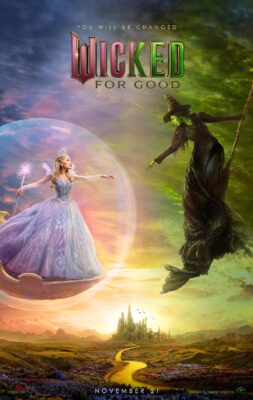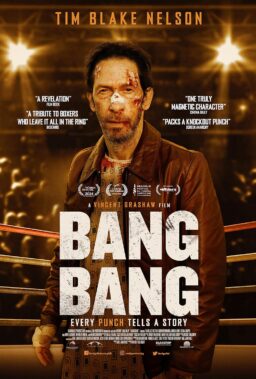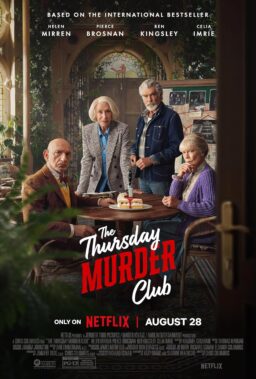
Performance? Art?
Consider: If a filmmaker like, say, Brian de Palma, had used actual images of dead and injured Vietnamese war casualties in one of his fictionalized, semi-pseudo-documentary features like “Greetings” (1969) or “Hi, Mom!” (1970), would he or the films’ producers or distributors have run a significant risk of being sued by the victims or their families? Are the legal or ethical issues any different now, with the carnage in Iraq? Why or why not? A few things to mull over regarding the latest “Redacted” scandal/controversy/promotional gimmick:
I suspect that De Palma was quite consciously out for publicity at the New York Film Festival press conference for “Redacted” Monday, when he accused Mark Cuban of HDNet and/or Magnolia Pictures of “redacting” the images of actual war casualties in his film’s final montage. And it worked. Here’s a movie about documentary reporting and amateur video and blogging of the occupation of Iraq and… look! IFC has posted a viral YouTube video of the NYFF confrontation between De Palma and Magnolia Pictures president Eammon Bowles that has been featured (even embedded) on sites such as Sergio Leone and the Infield Fly Rule, Movie City Indie, GreenCine Daily, spout blog, jürgen fauth’s muckworld and I don’t know how many other outlets including… well, the site you’re looking at right now.
How much more meta do you want to get?
Bowles denies he was in on any “staging.” But De Palma? Isn’t that what he does? He provokes, he fakes, he toys with what’s genuine and what’s phony to the point where the distinctions become tricky or even meaningless. If his role in the press conference, at least, wasn’t part of a “Be Black, Baby” performance piece (see “Hi, Mom!“) then it sure ought to have been. And even if it wasn’t, it still is. Spontaneous, pre-meditated, both, neither — it’s still a spectacle designed for the cameras and the audience.

Far from Vietnam: Internet technology as used, parodied and, yes, redacted in Brian De Palma’s “Redacted.”
But that’s not really the most important issue, is it? De Palma says he got the images for the montage sequence either off the Internet or otherwise, and that they are photos of real people, with real injuries, that photographers took in Iraq. Except for a couple pictures created specifically for “Redacted” — an wounded pregnant woman featured earlier in the movie and the victim of the fictionalized, (re-)enacted rape and murder — the photos are meant to be perceived as shockingly unfiltered, and/or to further the movie’s strategy of pushing the viewer to question what is real (I suppose I really should put quotation marks around that word in this context) and what has been composed for the movie you’re watching. In the version of “Redacted” shown at the Toronto and New York Film Festivals, and perhaps in Venice and elsewhere, the faces of the actual victims have been blacked out — as if someone had taken a marker and scribbled over their eyes to conceal their identities. (The logo of a YouTube-lookalike site shown in the movie has been similarly “redacted.”)
De Palma says he wants to use the montage with the unredacted faces. Bowles says (in comments posted at Movie City Indie):
the sole reason that the photos are redacted, is that it is legally indefensible to use someone’s unauthorized photo in a commercial work. any claim to the contrary is either hopelessly naive or willfully false. And any indemnification does not preclude getting sued, and considering the asset bases of cuban and wagner versus depalma, there’s no issue about who’s purses will be attacked (not to mention the presumption of agreeing to the image of one of your loved one’s mutilated body living on in the world wide media).
Brian De Palma is neither naive nor stupid. He knows what Bowles says is true — and that even if a suit went to court and the producers were able to successfully argue that their use of the photos was journalistic in intent, even within the context of a non-documentary commercial feature film, the cost of fighting such a lawsuit would be significant. In fact, “Redacted” announces itself as a “visual document” of “imagined events” (I’m not sure I remember the exact language used in the opening titles, but I believe that’s close), and as such does not attempt to present any factual documentation for those events. De Palma also knows that, while “Redacted” plays with documentary, web, home video and other techniques and formats, it can’t help but be an exploitation movie too, no matter how serious its concerns. It’s right there in the title: Come see what has been forbidden for you to see.
Again, that’s what De Palma does….
The legal risks are undeniable, and the question will come down to who is willing to distribute the film, in what form, and how much they are willing to risk. Karina Longworth reports receiving an e-mail from HDNet owner Mark Cuban, whom De Palma accused of having moral/aesthetic qualms about the montage:
“The film is going to be ‘redacted’ before we release it. He is using images that have not been cleared. We can not use images that have not been cleared. No movie can,” Cuban writes, noting that Magnolia has offered DePalma the opportunity to buy the film back and release it on his own dime. “At that point if its a matter of principle to him, he can absorb 100 percent of the risk and release the film as he sees fit. If he chooses not to, then we will release the movie without the images.” […]
“There is no way I am going to include images of people who have been severely wounded or maimed and killed when the possibility exists that their families could unknowingly see the images and recognize a loved one,” Cuban writes. “In this day and age, those pictures will be stripped out of the DVD release and unquestionably be posted on the internet exponentially increasing the likelihood it could happen. I wouldn’t do that to anyone.”
Generally speaking, the festival press has characterized the closing sequence as, well, “powerful” — citing it as the film’s coup de grâce and maybe even the rationale for its existence. It is unclear to me whether Magnolia is willing to release the film with the “redacted” montage, as presented in film festival screenings, or wants to remove or replace the sequence entirely.
But this brings me back to the question at the top of this post. “Redacted” adds the Internet to the mixture of media forms and styles De Palma synthesized and satirized in his political/commercial comedies in the ’60s and ’70s. That same technology, and the urban combat in Iraq, has enabled Iraqis to access information and legal mechanisms that weren’t available to poor, isolated, rural, illiterate, and/or non-English-speaking Vietnamese. Did the geographical and technological limitations of the place and time allow their images to be used with relative impunity? Perhaps the legal ramifications are different now than they were then — or are the differences primarily matters of media penetration and practicality? Have the moral issues changed at all? Where is the line, commercially and ethically, between BBC/”Frontline”-type documentary journalism (of the type imitated by the French doc in “Redacted”) and creations or recreations in a fictionalized context? Or between exploiting casualties of war and exposing the realities of what is happening to them? And does “Redacted” honestly address these questions? I’m not so sure, but at least in this sense the discussion about the movie may be (intentionally or unintentionally) more challenging and illuminating than what is in (or not in) the movie itself. Then again, once you posit that idea (especially about a film that so deliberately toys with reflexivity, dialectics and alienation effects), it automatically becomes an extension of the movie….
Unless I’m wrong and De Palma didn’t really want to shake anybody up.










